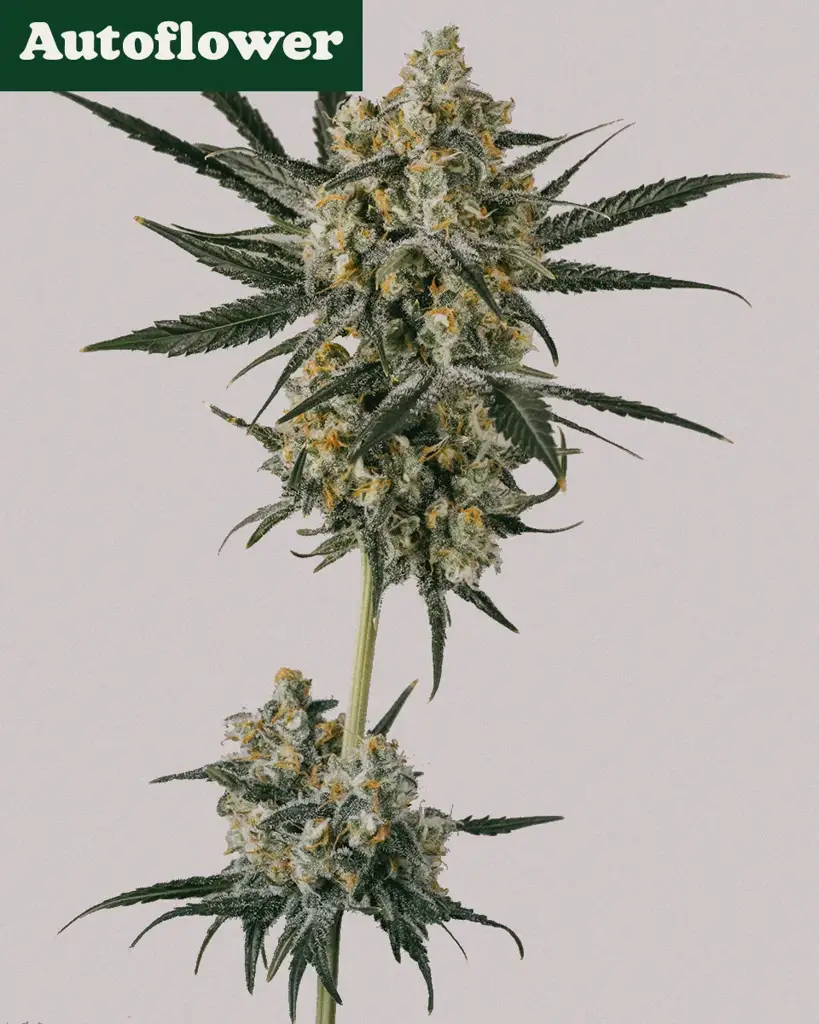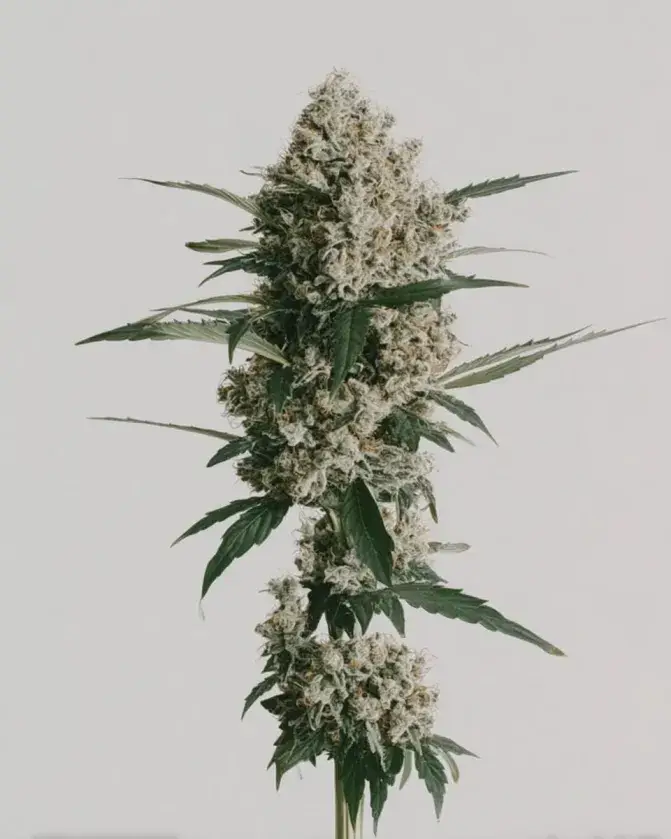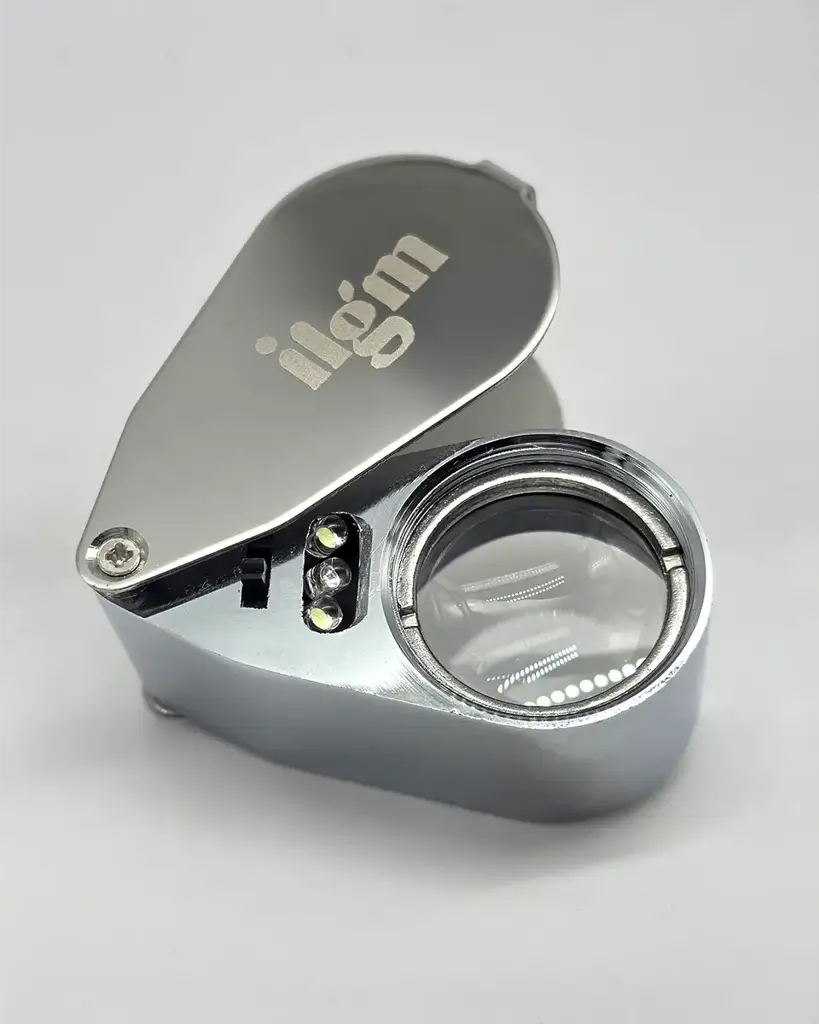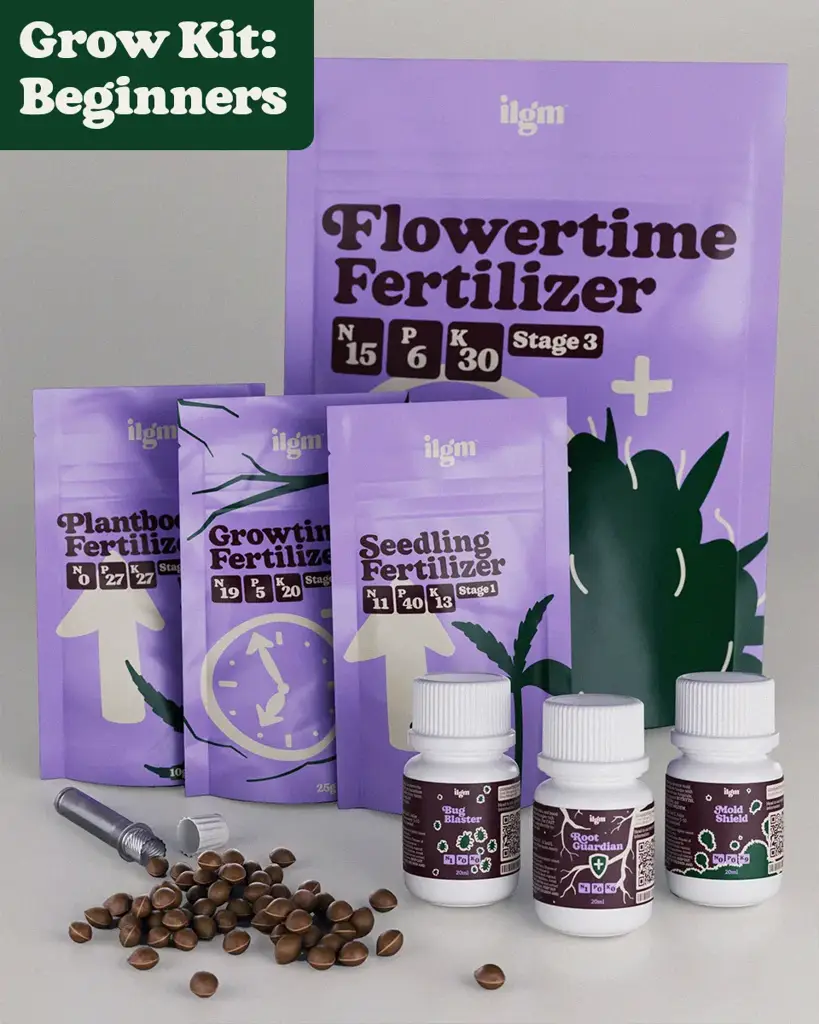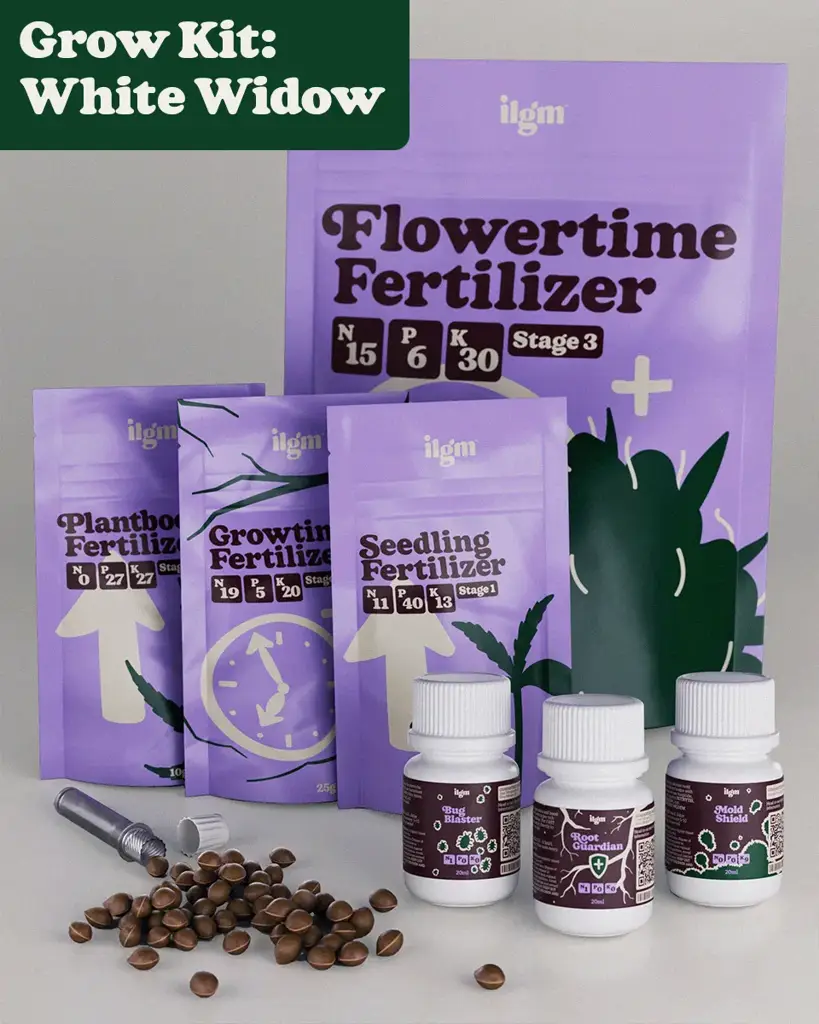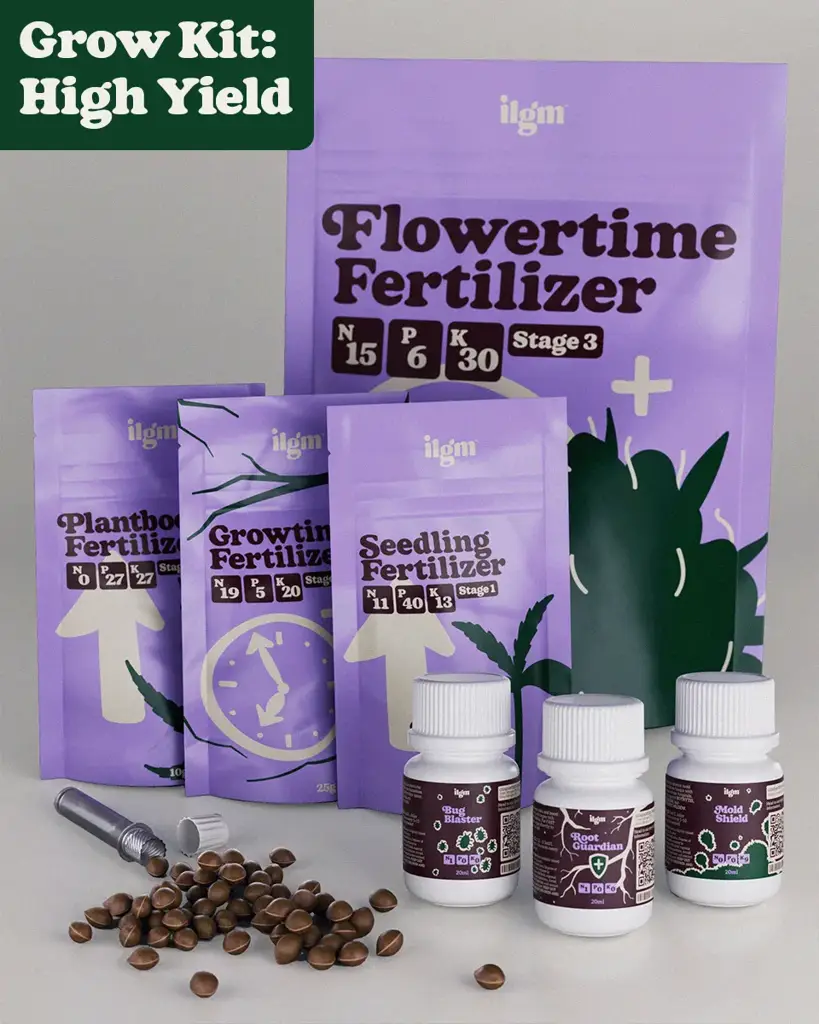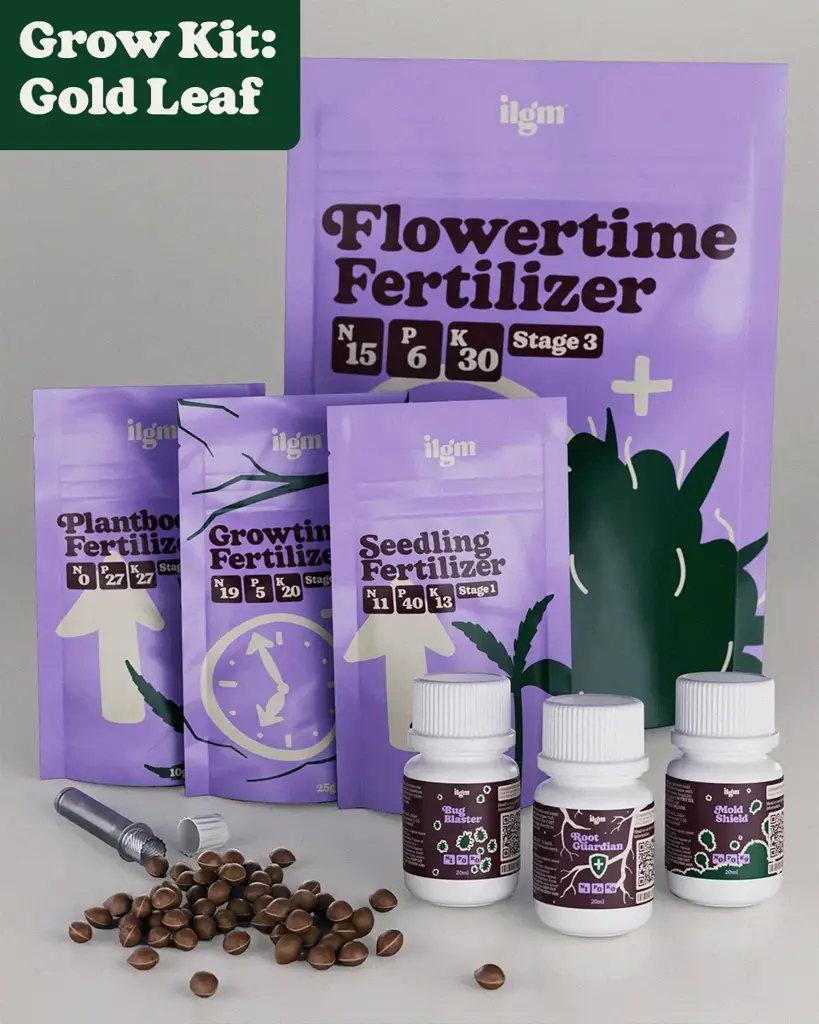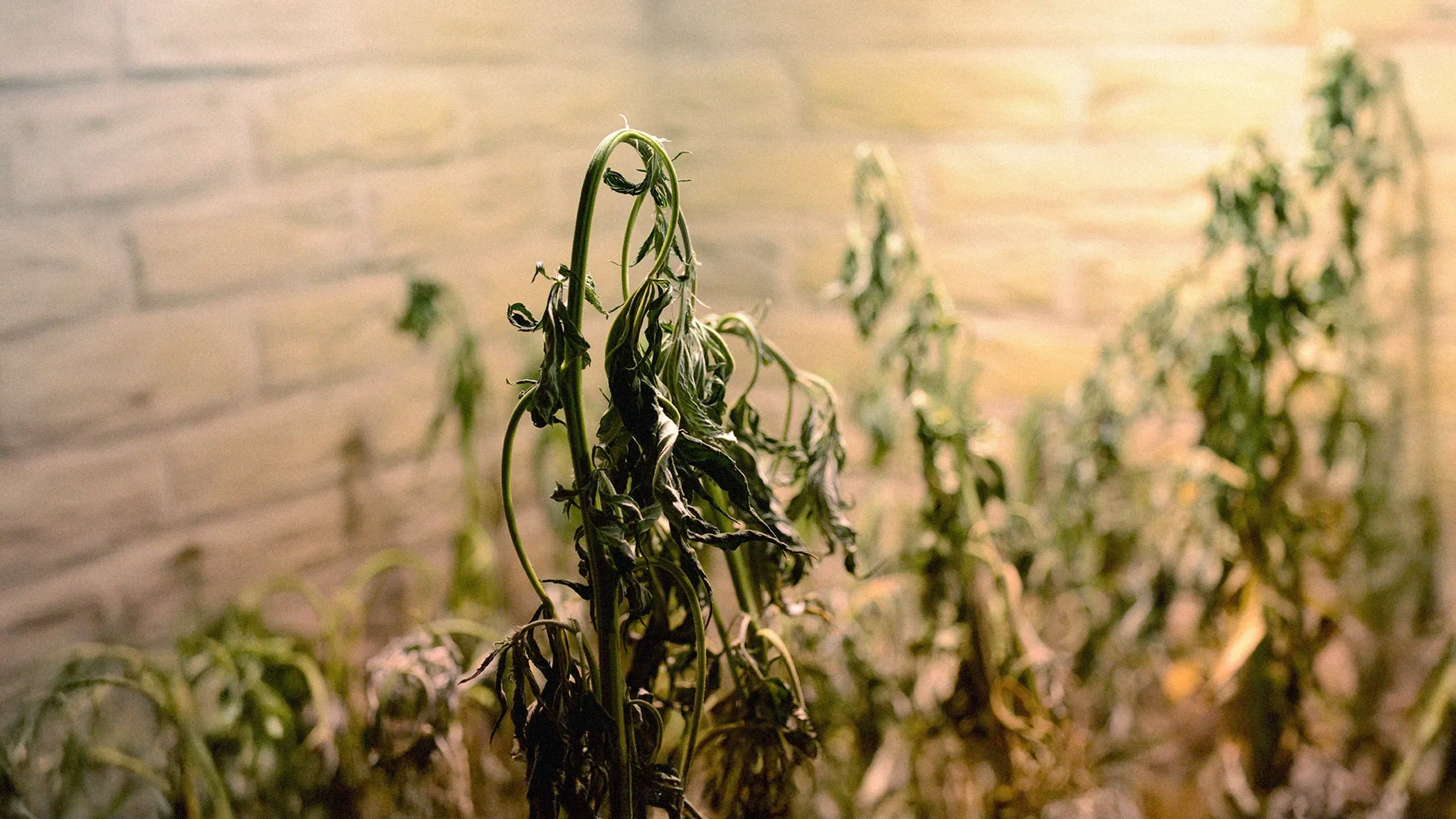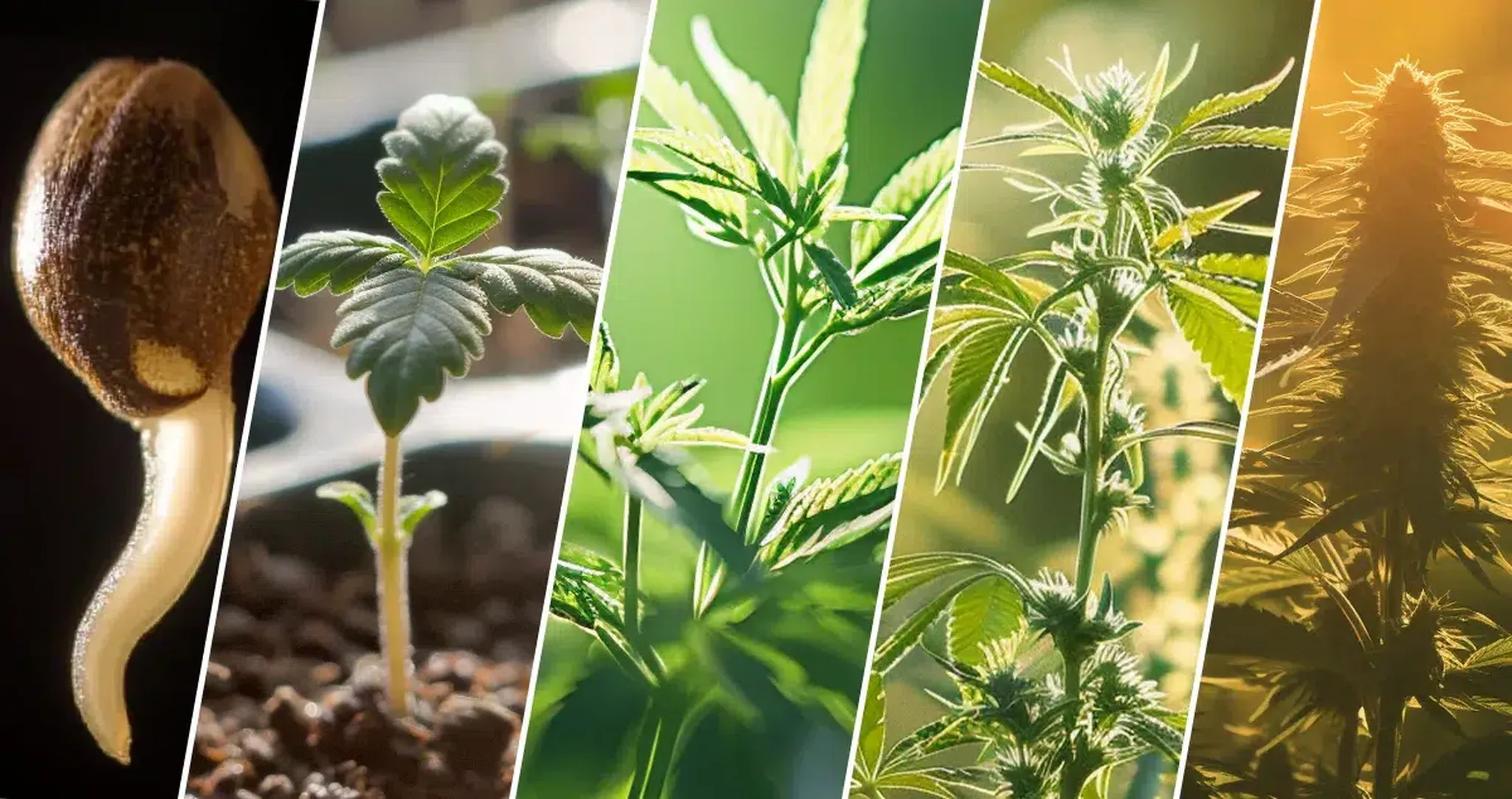
How to Water Cannabis Plants: The Ultimate Beginner's Guide
All living things need water to survive. How you water your cannabis plants plays a massive role in the outcome of your cannabis harvest. There is a fine line between under-watering and over-watering cannabis plants, and creating the ideal cannabis watering schedule should be a priority when you start growing weed.
Table of contents
Watering Cannabis 101
Watering cannabis plants is one of the most important responsibilities a grower should be aware of. Below are the fundamentals to be to allow you to achieve success when watering your weed plants.
When to Water Cannabis Plants
It’s all about timing. Knowing the right time to water your cannabis crops should be based on different factors:
How wet or dry the growing medium has become, watering only when the medium has become fully dry.
With more light intensity plants will photosynthesize and grow fast; this means water will transpire at a quicker rate, making your plants thirsty.
The size and maturity of your plants: younger plants need less water than mature plants.
Temperature: higher ambient temperatures will mean your plants transpire water quicker. Low humidity will also make your plants transpire water faster. The key takeaway point is that regardless of your situation, keep consistently checking your plants.

How Much and How Often Should You Water Cannabis
As a beginner grower, it took me plenty of trial and error over the years to find the sweet spot on how much to water cannabis plants. I have developed the 10% rule. This rule means you take the total volume, determine 10% of that and that's the amount of water you need. For a 5-gallon pot, that would mean watering it with half a gallon.
This rule prevented me from under-watering or over-watering cannabis plants. It gave me the ultimate peace of mind that my plants’ roots were thriving and produced extremely healthy growth and development.
Best Water Sources for Cannabis
Whichever water source you use always test it before you water your plants. Below are some pointers for the most common water sources
Tap water may be the most practical for watering weed plants, but make sure you know and inform yourself about the quality of the water in your area. Cannabis plants prefer soft water, which has a much lower electric conductivity (EC) than hard water. Note that it can contain chlorine and letting water sit for 24 hours might help it evaporate, always make sure to check the pH and EC before watering.
Rainwater can be a great choice for watering cannabis, especially for soil growers. It’s free and unless you live in a highly polluted area, clean too! If you're growing organically in soil and have space to collect it, rainwater is ideal. In some cases filtering is advised and always test.
Reverse osmosis (RO) water and Distilled Water are ultra-clean options, they both have low EC and will require Cal-Mag supplementation and pH adjustment. RO filter is a great fit for hydro growers or those dealing with hard or contaminated water sources.
Bottled water is clean with a stable pH, but it's expensive, wasteful, and can throw off feeding due to high mineral content. Well or spring water is free and plentiful if available, but its quality varies and usually requires testing due to high mineral levels. River water is the least reliable, often contaminated with runoff. The golden rule is always test your water quality before watering no mater the source.
Best Water Temperature for Cannabis
You do not want the water to be too hot (85 degrees Fahrenheit upwards) or too cold (50 degrees Fahrenheit or below), as both can shock your plants. From my experience of watering cannabis plants over 20 years, choose a warm temperature between 65 - 75 degrees Fahrenheit.
Our Favorite Beginner-Friendly Watering Techniques for Cannabis
Below are a few pointers to consider on the different methods you can apply the next time you are ready to give your plants a drink.
Top-Watering Cannabis
Watering from the top of the pot is, in general, how most cannabis home growers will water their plants. You can use a watering can with a rose on the spout. Water lightly around the edges of the pots and let the water slowly soak into the growing medium and distribute itself evenly. Don’t forget to apply the 10% rule to avoid over-watering weed plants.
From my experience, slow is best, and less is more! I find using a measuring jug and the same amount each time creates the ideal level of consistency.

Bottom-Watering your Weed
Another way you can water your plants is to simply pour water into a saucer underneath your cannabis plant pot. Again, slow is best, and less is more, so avoid overfilling the saucer and let the water soak upwards. Bottom watering is easy to do and extremely effective during the seedling stage (weeks 1-2 after germination) and especially when using the highly porous coco coir. Use a measuring jug to keep tabs on the amount and take your time.
Our Bestsellers
Which Watering Technique Should You Use?
It is important to know that no right or wrong method is set in stone, however, from experience, top watering is the most controlled style for watering cannabis plants. The advantage of top watering is that you can slowly and evenly distribute water to the edges of the pot, and see how much runoff there is (water exiting the base of the pot).
How To Water Cannabis by Growth Stage
Always with caution and intention, however, depending on how old your plants are in their lifecycle the way you water them will differ slightly.
Seedling Stage: Mist Lightly
 During the seedling stage, I have found it is best to be very delicate and water lightly. Yet again, less is more. Seedling roots are sensitive to overwatering and to damping-off. Watering can be done with a spray bottle, or very lightly with a bottle, just keep the watering extra minimal!
During the seedling stage, I have found it is best to be very delicate and water lightly. Yet again, less is more. Seedling roots are sensitive to overwatering and to damping-off. Watering can be done with a spray bottle, or very lightly with a bottle, just keep the watering extra minimal!
Vegetative Stage: Consistency is Key
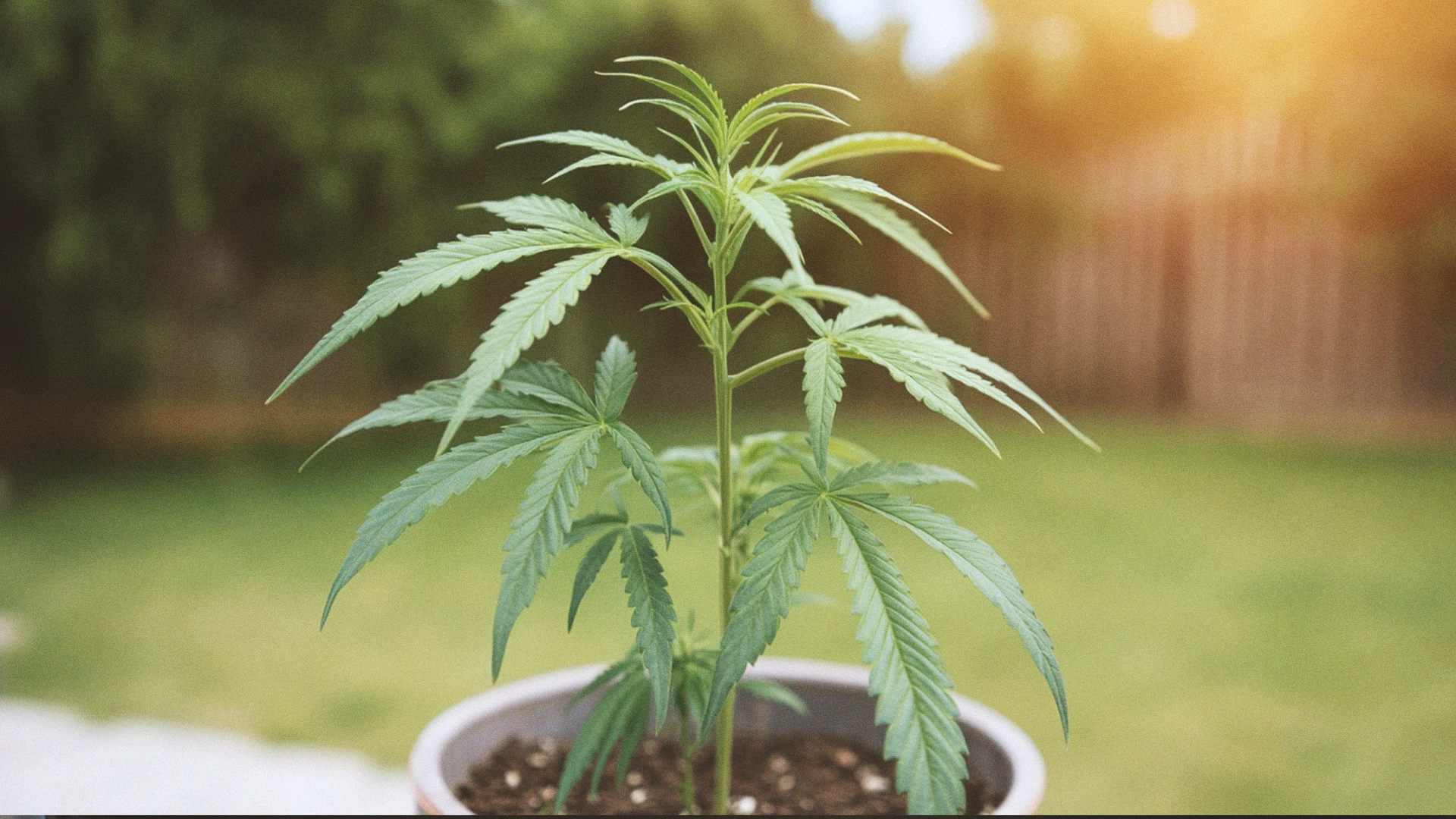 As your plants enter the vegetative stage, you need to be careful and provide a slow rate of flow and a consistent amount of water. Do not make the same mistakes I did, and give them too much water, this can cause the roots to become waterlogged and struggle for oxygen. Let the medium in your pots dry out between watering.
As your plants enter the vegetative stage, you need to be careful and provide a slow rate of flow and a consistent amount of water. Do not make the same mistakes I did, and give them too much water, this can cause the roots to become waterlogged and struggle for oxygen. Let the medium in your pots dry out between watering.
Flowering Stage: Check Often
 During the flowering stage, I recommend determining when to water based on how wet or dry the growing medium has become. Lift the pot to feel its weight, or use your finger to test moisture. If it’s light or dry a couple of inches down, it’s time to water. Over time, you’ll learn each plant’s unique rhythm.
During the flowering stage, I recommend determining when to water based on how wet or dry the growing medium has become. Lift the pot to feel its weight, or use your finger to test moisture. If it’s light or dry a couple of inches down, it’s time to water. Over time, you’ll learn each plant’s unique rhythm.
Watering Cannabis in Different Growing Mediums
Depending on the growing medium you chose watering schedules will vary. Some mediums retain more water than others:
Soil
 If you choose soil for growing cannabis, it's good to know that it can absorb high volumes of water and can take longer to dry out compared to others. You will not need much water at every feed, as the soil will retain water for long periods before drying out, which is why the 10% rule works as a treat with soil.
If you choose soil for growing cannabis, it's good to know that it can absorb high volumes of water and can take longer to dry out compared to others. You will not need much water at every feed, as the soil will retain water for long periods before drying out, which is why the 10% rule works as a treat with soil.
Soilless Mixes
 A soilless mix may contain coco coir, perlite, vermiculite, and rockwool. Water lightly as a soilless mix can be extremely porous, meaning it will also retain lots of water.
A soilless mix may contain coco coir, perlite, vermiculite, and rockwool. Water lightly as a soilless mix can be extremely porous, meaning it will also retain lots of water.
Coco Coir
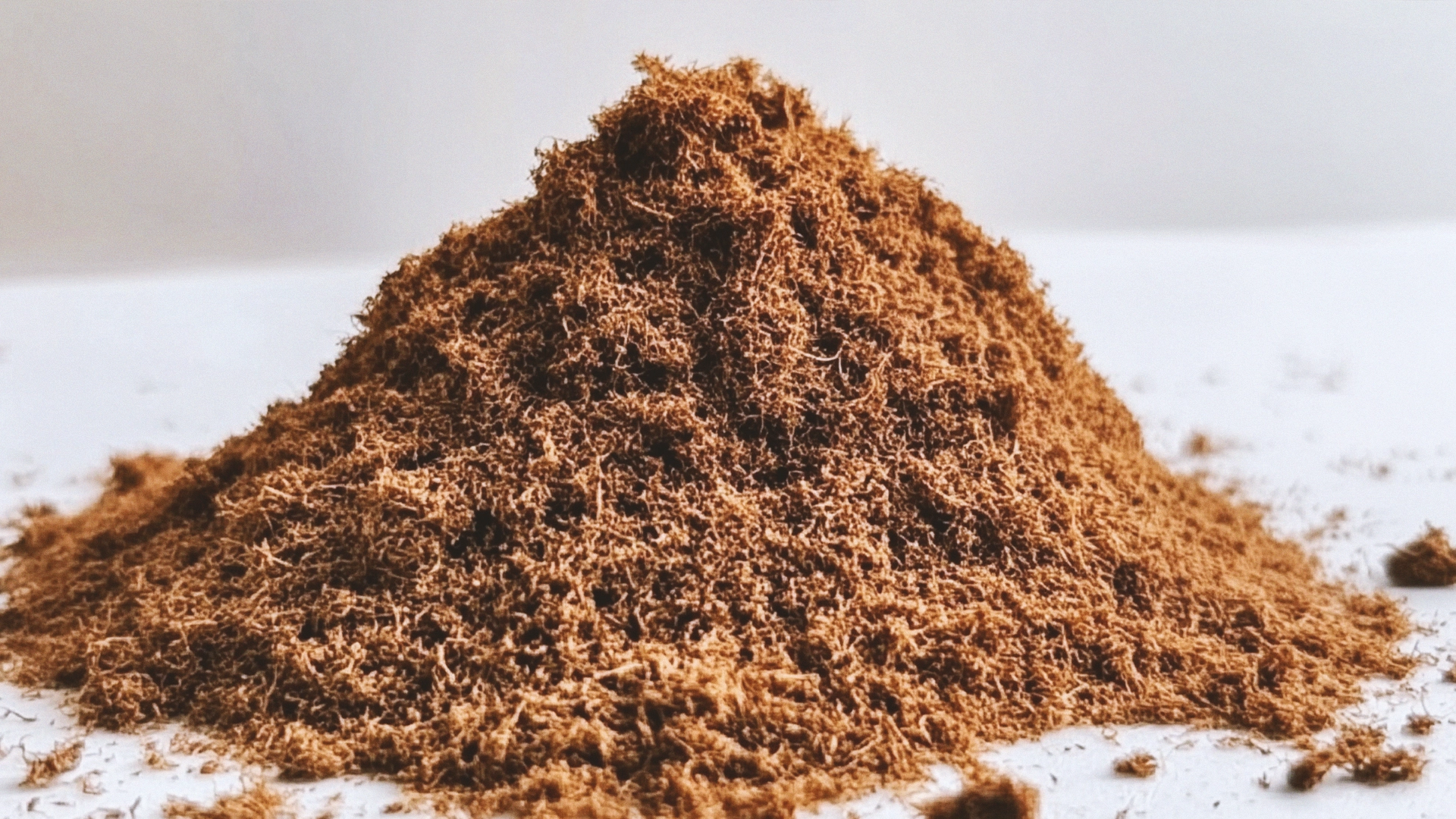 Another highly absorbent growing medium made from coconut husk fibers. You will not need a lot of water when using coco coir, which has excellent water retention and wicking ability. Most coco coir substrates will contain 30-50% perlite to provide more air pockets for the roots and speed up drying times between watering.
Another highly absorbent growing medium made from coconut husk fibers. You will not need a lot of water when using coco coir, which has excellent water retention and wicking ability. Most coco coir substrates will contain 30-50% perlite to provide more air pockets for the roots and speed up drying times between watering.
Rockwool
 Used for growing with hydroponic systems, with drip stakes on a timer, rockwool allows you to add high volumes of water without the roots drowning or becoming over-saturated. Rockwool provides high levels of oxygen for the roots and can stay constantly wet with fewer issues.
Used for growing with hydroponic systems, with drip stakes on a timer, rockwool allows you to add high volumes of water without the roots drowning or becoming over-saturated. Rockwool provides high levels of oxygen for the roots and can stay constantly wet with fewer issues.
Indoor vs Outdoor Cannabis Cultivation
If you decide to grow cannabis outdoors, you will benefit from the energy of the sun but will also be more vulnerable to weather changes. Make sure you get cannabis seeds that suit your local climate and be aware of seasonal changes. My top tip is to keep an eye on your plants and to water cannabis just before sunrise and just after sunset.
Common Cannabis Watering Mistakes (and How to Avoid Them)
Watering cannabis is all about balance. Below are the most common pitfalls and the simple ways to avoid them.
Overwatering / Underwatering Cannabis
Never water if the medium is still too wet, and don’t wait until it’s bone dry. Insert your finger deep along the pot’s side: if it’s moist, hold off a bit; if it’s dry, water slowly and consistently.
Incorrect pH or EC in Your Water
Maintaining the right pH keeps nutrients available to your plants. By monitoring your EC and adjusting pH, you promote efficient nutrient uptake and healthy growth and prevent nutrient lockout. Think of a swimming pool: water that’s too acidic or alkaline causes irritation and corrosion. The same goes for plants—an incorrect pH locks out nutrients. Test regularly with a digital pen or strips, aiming for 6.0–7.0 in soil.
Keep an Eye Out for Hard and Soft Water
Not all tap water will be the same and optimal for watering weed plants. Be vigilant if the water is soft or hard water, and the easiest way to tell is by testing the E.C. level.
Hard water is already high in minerals (EC above 0.8) and will require running through a reverse osmosis pump or considering another water source. Soft water (0.4 and below) is the best choice for watering cannabis.
Stoney’s Top Tips
Find the right amount, don’t overwater or underwater: measure carefully, pour slowly, and track amounts in a grow diary.
Don’t use cold water. Water at 65–75°F to avoid shocking the roots.
Don’t skip watering. Sticking to a consistent schedule prevents stress.
Don’t assume tap water is clean. Get local water information and test when possible..
Don’t let stored water grow algae. Keep it in a cool, dark place away from direct light.
Tools & Equipment for Watering Cannabis
Below is a checklist of tools and equipment for precision watering. All of the items below can be purchased online or at your local grow shop, for a relatively cheap price.

Measuring Jug
Digital pH Pen
pH Indicator Test Strips
Digital Electric Conductivity (EC) Pen
Thermometer
Advanced Tips to Water Cannabis Like a Pro
Below are my tips to create the most accurate and safest cannabis watering schedule possible.
Adding Nutrients to Water: Measure Twice

The most effective way is simply to follow the instructions on the side of the bottle, however, I would recommend using slightly less as a beginner grower and assess how the plants appear over 24 hours. For example, instead of using 3ml per gallon, measure 2/2.5ml per gallon to be on the safe side to avoid overfertilizing your plants. And remember, measure twice, pour once.
How to Collect Water Runoff
 Runoff water exits the bottom of the pots after watering. This water is full of valuable data and the EC and pH will tell you what is going on inside the growing medium and roots. Simply take a sample of the runoff water using a plastic cup, from the base of the pots where the water is dripping out from and determine the pH and EC.
Runoff water exits the bottom of the pots after watering. This water is full of valuable data and the EC and pH will tell you what is going on inside the growing medium and roots. Simply take a sample of the runoff water using a plastic cup, from the base of the pots where the water is dripping out from and determine the pH and EC.
Flushing Before Harvest or Not?
Flushing is a technique used in cannabis cultivation where nutrient feeding is stopped and only pH-balanced water is provided during the last 10-14 days of flowering. It is done to remove accumulated salts and nutrients from the growing medium. Proponents of flushing believe it results in a smoother, cleaner-tasting final product by eliminating harshness caused by built-up salts and nutrients. It is also thought to prevent nutrient burn and improve overall harvest quality.
Opponents of flushing argue that it is unnecessary and can harm plant development. They contend that plants need nutrients throughout their entire life cycle, including the flowering stage, and depriving them can stunt bud growth and reduce yield. Additionally, some growers believe that flushing can stress the plants, negatively impacting resin production and potency.
Using Additives in Water
The beauty of being a cannabis grower is you are in charge of what goes into your crops. Below is a brief explanation of what each additive does and why they can be added.
Enzymes: Using enzymes allows the plants to use the nutrients faster and keeps the roots clean and free from pathogens such as root rot. A must-have for those who choose to flush their plants.
Silica: Silica will increase the plant’s resistance to disease and pathogens and can be used as a foliar application for spraying the tops and undersides of leaves.
Organic Compost Teas: Adding aerated composted tea to your organic crops will give your plants a microbe-rich tonic packed with nutrients. I can personally vouch that teas dramatically improve the soil food web and produce phenomenal flavors and aromas.
What About Hydroponics?
Hydroponics delivers water and nutrients directly to roots, offering precise control but little buffering. Small pH or EC imbalances can quickly stress plants, and frequent reservoir changes can increase costs.

In contrast, soil and soilless hold water and offer a buffer. These mediums are more forgiving and beginner-friendly.
Final Thoughts: Find Your Rhythm & Less is More!
Watering cannabis plants requires some attention to detail and an understanding of the plant's needs. Remember to monitor soil moisture, pH, and nutrient content regularly to create the ideal watering schedule for your cannabis plants.

Stoney Tark
Stoney Tark, a top cannabis writer & breeder, shares expert tips on growing, breeding & hash making. Author, podcaster & industry voice!


